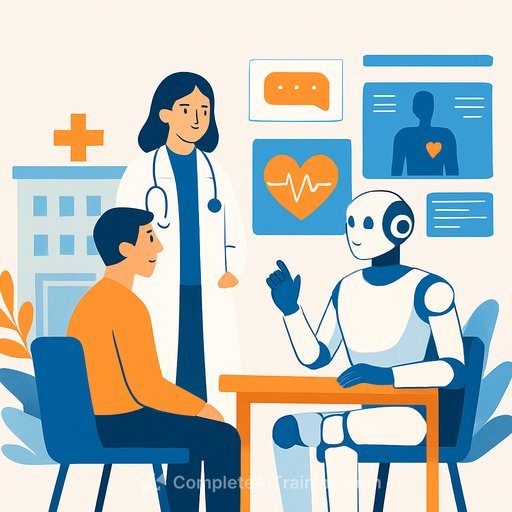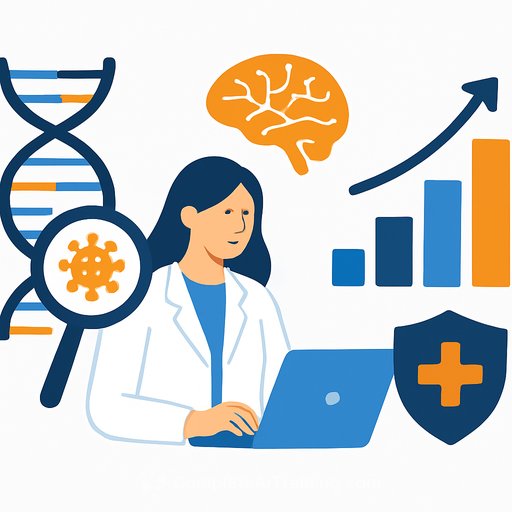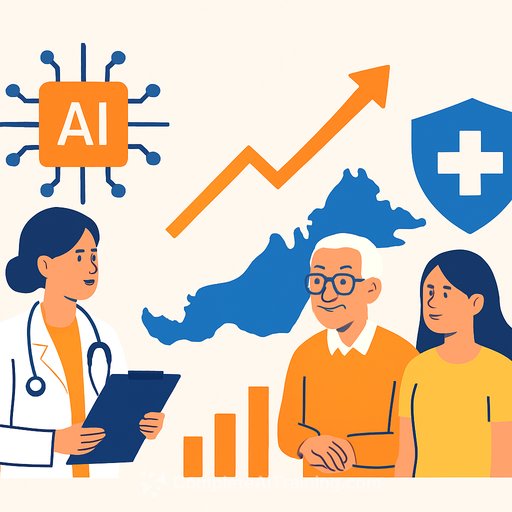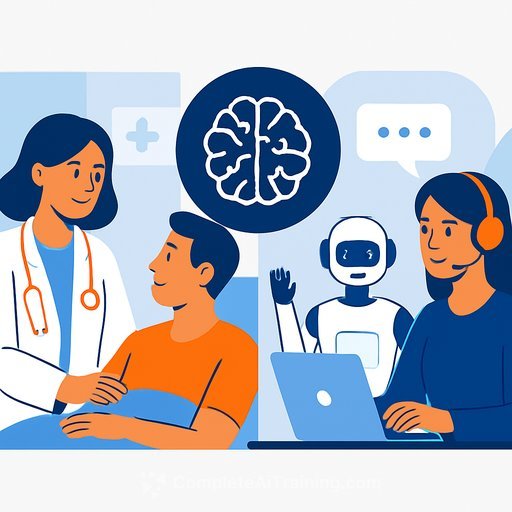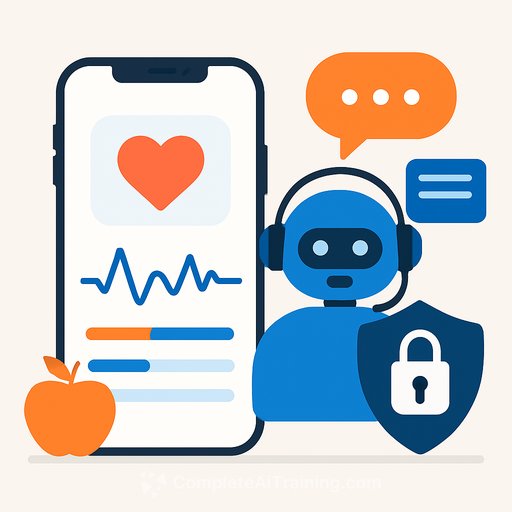How AI Is Transforming Health Care in New Jersey
Two moments sparked a wave of practical innovation here: a sister's breast cancer for Sang Won Bae at Stevens Institute of Technology, and a father's fatal heart attack for Naveena Yanamala at RWJUH. Both asked the same question: could AI have predicted, prevented, or softened the blow?
That's the promise. Shift care from reactive to predictive. Use the data we already collect to spot risk earlier, guide treatment with more precision, and give clinicians time back with their patients.
What AI does best
AI eats data. Health care generates oceans of it. No human can read it all, much less connect the dots across imaging, genomics, notes, and devices in real time.
Rutgers' Center for Biomedical Informatics and Health AI is building a multi-layer database that merges EHR, genomic, epigenomic, and imaging data. The goal: a foundation teams can query to answer clinical questions fast and at scale.
What humans can miss
At Atlantic Health Systems, AI is flagging pulmonary embolisms, brain bleeds, aneurysms, and aortic dissections that are easy to overlook-especially when the scan wasn't ordered for that purpose. As Dr. Devon Klein notes, radiologists catch the target finding; algorithms are catching the incidental ones.
Atlantic is running a dozen algorithms for ten disease processes today. By 2026, they expect "foundational algorithms" scanning chest CTs for up to 30 conditions in parallel.
More time for patients
EMRs were supposed to help. Instead, they buried clinicians under clicks and scrolling. Hackensack Meridian Health is using AI to auto-summarize charts by specialty so cardiologists, oncologists, and primary care physicians see what they actually need.
The outcome: less time parsing the record, more eye contact, better conversations, and fewer details slipping through the cracks.
Predicting outcomes
RWJUH and Robert Wood Johnson Medical School are studying how AI can forecast readmissions and mortality risk before discharge-and point patients to the actions that change those odds.
This isn't theory. A 2024 study in Taiwan showed AI reviews of ECGs reduced death by 31% by highlighting high-risk patients who needed faster intervention.
Getting personal
Precision medicine depends on pattern recognition across biology, lifestyle, and environment. Princeton Precision Health is building AI models that account for genetic variation across populations so therapies work beyond a narrow slice of patients. As Olga Troyanskaya puts it, deep learning makes it feasible to map those genomic signals at scale.
At Stevens, Bae's team is combining phone and wearable data with AI to assess resilience, performance, and injury recovery in student athletes. The same approach could guide survivors of cancer, patients with diabetes, and others-an always-on health companion that flags problems early and supports decisions between visits. It won't replace physicians. It will extend their reach.
The pitfalls
Bias is real. Fay Cobb Payton at Rutgers has shown how AI can misdiagnose or mis-treat underrepresented groups when training data skews white or omits key socioeconomic context.
Privacy risks rise as data pipelines expand. And while AI can save lives, errors can harm. Antonina Mitrofanova warns that generative models can hallucinate-confident answers that are flat-out wrong-so they need guardrails and oversight.
Olga Troyanskaya argues for neutral, rigorous evaluation frameworks managed by independent organizations. Treat AI like any clinical tool: verify, monitor, and hold it accountable.
What health leaders can do now
- Establish an AI governance group with clinical, data, compliance, and patient representation.
- Inventory all AI in use or proposed; classify by clinical risk and intended use.
- Audit data representativeness across race, ethnicity, sex, age, language, and comorbidities; re-train or reweight where gaps exist.
- Keep a human in the loop for high-risk decisions; define clear override and escalation paths.
- Validate models prospectively on your population; benchmark against standard of care and external datasets.
- Protect privacy: de-identify rigorously, lock down access, and enforce strong BAAs with vendors.
- Integrate into workflow, not around it; measure time saved, diagnostic yield, readmissions, and patient-reported outcomes.
- Explain AI use to patients; obtain consent where appropriate and offer opt-outs when feasible.
- Upskill staff on AI basics, limitations, and safe prompt practices for generative tools.
New Jersey examples to watch
- Atlantic Health Systems: incidental findings at scale in imaging.
- Hackensack Meridian Health: specialty-focused chart summaries for faster intake and better visits.
- RWJUH/RWJMS: discharge planning informed by predicted outcomes.
- Rutgers: multi-omics data infrastructure to accelerate research to bedside.
- Princeton Precision Health: population-aware models for more equitable precision medicine.
- Stevens Institute: wearable-informed monitoring that supports recovery and daily decision-making.
Where to go from here
Start small with a clear use case. Prove clinical value, then scale with guardrails. Balance speed with safety-your patients expect both.
For broader context, see the U.S. Department of Veterans Affairs overview of AI in VA research and the National Academy of Medicine's draft AI Code of Conduct.
If your team needs structured upskilling on applied AI and workflow integration, explore role-based picks here: Complete AI Training: Courses by Job.
Your membership also unlocks:

